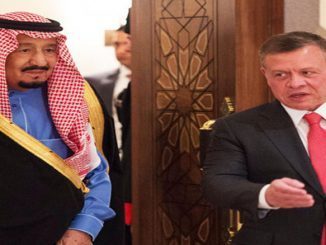
Aerial attacks on oil pipeline deep inside Saudi Arabia suggest significant leap in Houthi drone capabilities.
Drone attacks on a Saudi oil pipeline west of Riyadh on Tuesday have revealed an apparent significant leap in the capabilities of the Ansar Allah fighting group, otherwise known as the Houthis.
The Aramco East-West pipeline, stretching across the country to the port and oil terminal at Yenbu, was damaged in two places as pumping stations were hit.
The attacks caused minor damage but alarmed an international community already rattled by the sharp downturn in relations between Iran and the United States.
Information on the attacks is scarce, posing more questions than providing answers.
Signs of sophistication
Drones have been increasingly used by the Houthis in operations against the Saudi-UAE-led coalition. In July 2018 a drone exploded at Abu Dhabi airport causing only minor damage but sending a message to the UAE that its economic interests were not invulnerable.
In January 2019, a senior intelligence chief, along with several officers, were killed at the al-Anad air force base just outside Aden by a weaponised drone that exploded above the delegation.
In March the Houthis released video footage of a drone flying past Saudi’s al-Shuqaiq water treatment and power plant, 130km from the Yemeni border.
It was not attacked but the warning was clear, with water being a vulnerable resource and many Middle Eastern countries relying heavily on desalination plants.
How have Houthis achieved this?
Analysts are divided about the extent of the help given to the Houthis by Iran.
A UN report submitted to the UN Security Council in January 2018 found compelling evidence that locally produced drones had an almost identical build and capability as the Iranian Qasef-1 UAV, or unmanned aerial vehicle.
This drone is GPS-guided to its target, often diving into the target to cause damage.
While the Houthis have leant heavily on Iranian help in the past, Houthi drones have increasingly used parts that are commercially available in the international market, with the conflict itself acting as a catalyst for design innovations.
Sami Hamdi, editor-in-chief of the International Interest periodical, is not surprised that drones are being used in increasing numbers.
“[The Houthis] claim they are creating their own drones, that they’ve learnt how to make them. Outside of the war of Yemen, for example in Iraq, we’ve also seen this among Kurdish forces. They too have been able to create their own drones and use them …
“So, it is not particularly strange that we find drones among the Houthis. Let us also not forget that they are backed logistically by the Iranians who continue to provide them with expertise on how to develop some of these weapons,” Hamdi added.
Why did Saudi Arabia fail to detect them?
A slow, unstealthy aircraft was able to fly for several hours deep into Saudi Arabia, and was not detected and intercepted in a time of war.
This will ring alarm bells, as retired Jordanian air force general Mamour al-Nowar told Al Jazeera.
“Their air defence system completely failed to handle such attacks” and the Houthis now have the ability “to reach Riyadh and Abu Dhabi,” potentially paralysing the country “if they hit desalination water pumping stations or the [almost built] nuclear plant in Abu Dhabi”.



